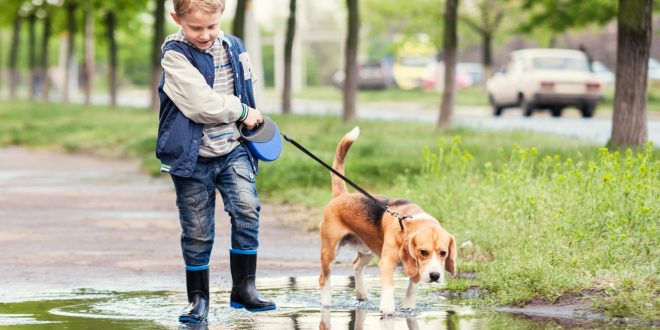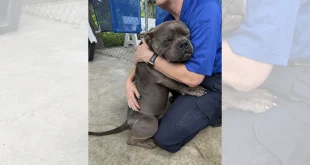Dogs have long been known as “man’s best friend,” and when it comes to children, the bond between them and their furry companions can be truly special. Whether it’s playing in the yard, cuddling on the couch, or going on family walks, the relationship between dogs and children can provide endless joy, emotional support, and valuable life lessons. Here’s a closer look at why dogs and children make such a great team and how to nurture this important bond.
1. Emotional Development and Support
Having a dog can be incredibly beneficial for a child’s emotional growth. Dogs provide unconditional love and affection, which helps children feel safe, loved, and supported. The presence of a dog can also teach children empathy, patience, and responsibility, as they learn to care for their pet by feeding, grooming, and taking it for walks.
Studies have shown that children with pets often experience lower levels of anxiety and stress. The companionship of a dog can offer comfort during tough times, whether it’s dealing with school challenges, social difficulties, or simply coping with everyday life. Dogs are great listeners, and their non-judgmental nature makes them perfect emotional support companions.
2. Teaching Responsibility
One of the greatest lessons that children can learn from having a dog is responsibility. Feeding, watering, and taking care of a dog’s basic needs helps kids understand the importance of routine, discipline, and commitment. These tasks can also teach them the consequences of not following through with responsibilities.
Involving children in the care of a dog can foster a sense of pride and accomplishment. As children take on more tasks, they gain confidence in their abilities and develop a strong work ethic.
3. Encouraging Physical Activity
Dogs and children often make the perfect workout partners. Kids are naturally energetic, and a dog is the ideal companion for outdoor adventures. Whether it’s playing fetch in the yard, taking a walk, or participating in a dog-friendly activity, having a dog encourages children to stay active and spend time outdoors. Regular exercise with a dog also contributes to a healthy lifestyle, both for the child and the pet.
Dogs also help children develop motor skills and coordination through activities like running, jumping, or playing tug-of-war. These physical activities promote overall fitness and help kids build endurance, balance, and coordination.
4. Teaching Social Skills
For children, especially those who may struggle with social interactions, having a dog can be a great icebreaker. Dogs are natural conversation starters and often help kids form friendships with other pet owners. Whether at the park or a local dog-friendly event, children can bond over their shared love of dogs, which can be an invaluable tool in helping them develop social skills.
Additionally, dogs can help children practice nurturing behaviors, teaching them to be kind, considerate, and aware of others’ needs. Children learn how to approach their dog gently, communicate through body language, and read the emotional cues of their pet. These skills translate to improved social interactions with other people as well.
5. Building a Lifelong Friendship
The bond that forms between a dog and a child is often long-lasting. As children grow older, their relationship with their dog can evolve, but the companionship and love remain. Having a dog through childhood can create lasting memories that children will carry with them into adulthood, teaching them the importance of loyalty, love, and friendship.
Moreover, growing up with a dog can also lay the foundation for responsible pet ownership in the future. Children who have positive experiences with pets are more likely to become compassionate and dedicated pet owners as adults.
6. Safety and Emotional Comfort
Dogs have a unique ability to protect and comfort their families. Many dogs are naturally protective and will go to great lengths to keep their family safe. This protective instinct, combined with their ability to sense emotions, makes dogs excellent guardians for children. Whether it’s offering comfort after a bad dream or alerting parents to potential danger, dogs serve as both protectors and companions.
Additionally, dogs offer a sense of security for children. Their presence can be reassuring, providing comfort during unfamiliar situations, such as family travel or new social settings. The calm and steady presence of a dog can help ease children’s fears and anxieties.
Conclusion
The relationship between dogs and children is truly a unique and beautiful one. Dogs not only offer companionship and love but also help children develop valuable life skills like responsibility, empathy, and social interaction. From encouraging physical activity to providing emotional support, dogs enrich the lives of children in countless ways. As children grow, the bond they share with their dogs can last a lifetime, creating memories and life lessons that will stay with them forever. So, if you have a dog and children, cherish the connection they share—it’s one of the most rewarding and fulfilling relationships you can nurture.
 PAWS AND WHISKERS PET CARE
PAWS AND WHISKERS PET CARE




